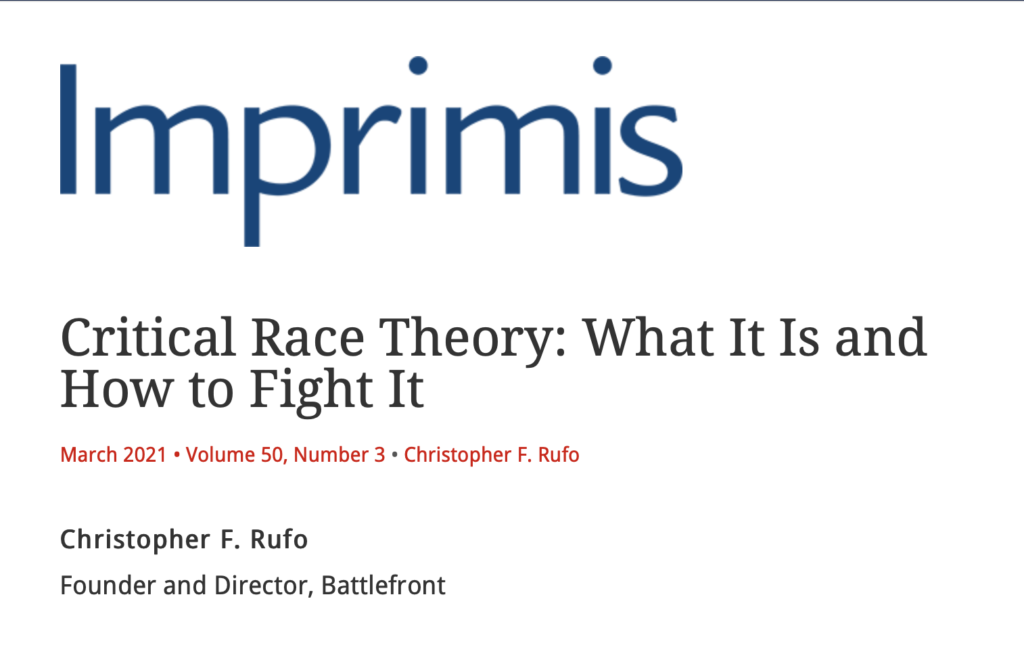CRT is *not* a class or a subject. It’s a methodology that trickles progressivism into every class and all aspects of education including through the resources and books used and made available to students K-12.
So, what Is CRT exactly? When they say there is no CRT or its tenets in our schools they are referring to the “original” Critical Race Theory which is specifically a college level legal course which argued that “racism and white supremacy were defining elements of the American legal system.”
Today, Critical Race Theory is an academic discipline, originally formulated in the 1990s, built on the intellectual framework of identity-based Marxism. Relegated for many years to universities and obscure academic journals, over the past decade it has increasingly become the default ideology in our public institutions. Sub-fields of CRT also focus on gender identity and sexual orientation. CRT can also be termed as Diversity, Equity and Inclusion (DEI) and/or SEL (social and emotional learning) in schools.
At its core (no matter its name) it’s a radical ideology that divides society up into groups based on race, ethnicity, sexual preference, religion, disability status, and gender. It delivers ideological theories to students as *fact*. I.e. concepts of White Privilege, White Fragility, Systemic Racism, or the type of altered American History found in The 1619 Project were each created by university professors, journalists and activists with Marxist beliefs.
This ideology uses our natural empathy to indoctrinate by perpetuating these ideas and theories under the guise of “Social Justice” and “Tolerance.” At the same time it fully demeans white children and their parents who’ve done nothing other than being born white. It makes victims of black and brown children and their families, including members of the LGBTQ community.
To understand the practice and application of Critical Race Theory today, see a paper written by Lawrence Parker, published in the Oxford Research Encyclopedia that validates the use of this practice and illustrates how it can be applied in K-12 educational environment.
The piece concludes; “CRT and qualitative methodology and methods will continue to evolve and encompass new conceptions and representations of race and racism, as well as move into other areas of activist scholarship with youth of color. In the end, the combination of CRT and qualitative methods and methodology will continue to produce valuable research and strive for ways to link CRT’s original forceful critique of discriminatory practices in primary/secondary schools and colleges/universities and the ways that racially progressive ideas from the CRT critique can lead to acts of meaningful intersectional change.”
Below is more information about Critical Race Theory, its origins and noteworthy academic intellectuals who challenge these ideas:
